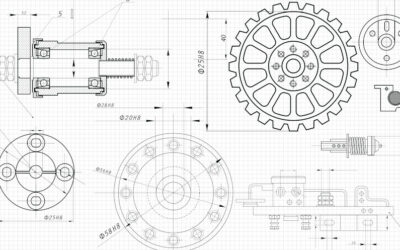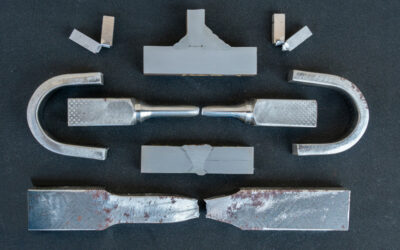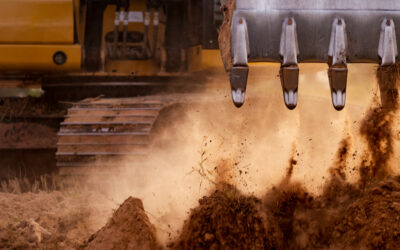You don’t need to be an MIT graduate to know that electronic devices and machines generate heat when operating. When left unsupervised, this situation can quickly lead to the device overheating, causing it to malfunction. Then, unless you react quickly enough, this malfunction can lead to permanent damage.
To prevent overheating, most devices incorporate heat sinks, components responsible for heat management within the device. They work by dissipating heat from vital areas of the machine or a device, such as the central processing unit (CPU), keeping it cool and functioning.
Interestingly, while playing a pivotal role in keeping your electronic devices operating correctly, heat sinks are often overlooked, likely due to their rather small size. If you would like to learn more about these miraculous components, this guide will provide you with all the essential information you need to understand what heat sinks are and how they work.
Let’s sink right in (pun intended).
What Is a Heat Sink?
Let’s start by explaining in more detail what a heat sink is. In simple terms, it’s a component that works as a passive heat exchanger, regulating the temperature of a mechanical or electronic device.
It does that by increasing the device’s working surface area, transferring the heat from a heat-generating component to a low-temperature fluid. This way, the heat dissipates away from the device, ensuring it operates without overheating.
Due to their fantastic cooling properties, heat sinks are used in numerous industries, including CNC machining. Typically, they’re used to cool computer components – usually, a CPU and GPU – and power transistors or lasers.
How Are Heat Sinks Built?
The need for a larger surface area significantly affects how heat sinks are built. A typical heat sink consists of a base connected to very narrow fins or pins. That way, heat sinks can fit as much surface area as possible into a specific volume.
However, the size and shape of the fins vary between different heat sinks. What is more, they have a significant impact on how the heat sink performs. We can distinguish between:
- Pin-fin heat sinks. Such heat sinks have pins extending from their base. They come with the largest surface area among different types of heat sinks and work best in low airflow cases. The pins usually come in a cylindrical, elliptical, or square shape.
- Plate-fin heat sinks. A plate-fin heat sink has rectangular fins that extend from its base. Such heat sinks are more common than pin-fin systems and work best with unidirectional airflow.
- Flared-fin heat sinks. Flared-fin systems are a variation of plate-fin heat sinks. They have a flared fin arrangement (hence the name) that decreases flow resistance.
Some heat sinks also have fans and blowers attached. These are called active heat sinks. We’ll talk more about them later in the article.
How Does a Heat Sink Work?
Heat sinks use a thermal conductor that takes heat away from the heat source and draws it towards its surface area, which then makes contact with the cooling air or fluid. The whole process involves four basic steps:
- The source generates heat. The source can be any system that creates heat when operating and requires cooling for proper functioning. It can be a mechanical, electrical, chemical, nuclear, solar, or friction system.
- Heat transfers away from the source. Through natural conduction, heat moves into the heat sink and away from the source. This process is directly associated with the thermal conductivity of the heat sink’s material. That is the reason why materials like aluminum or copper are often used to construct heat sinks. They have high thermal conductivity properties.
- Heat is distributed throughout the heat sink. Heat will then travel through the heat sink, moving from a high-temperature to a low-temperature environment. What it means for the heat sink is that its heat profile won’t be consistent. Therefore, heat sinks are typically hotter towards the source and cooler towards their extremities.
- The heat sink moves heat away. The final step involves heat moving away from the heat sink. It heavily relies on the sink’s temperature gradient and its cooling fluid (typically air or electrically-conductive fluid). The fluid passes across the heat sink’s surface and removes heat into the surrounding environment by using thermal diffusion and convection. What’s important to note here is that if the surrounding temperature isn’t cooler than the heat sink, the sink won’t remove heat.
The Different Types of Heat Sinks
When talking about heat sinks, we differentiate three basic types of heat sinks – passive, active, and hybrid. More on them below.
Passive Heat Sinks
Passive heat sinks rely on natural convection. That means that it’s only the buoyancy of hot air that generates airflow across the heat sink surface. Because of that, passive heat sinks don’t require secondary power or control systems when removing heat. On the other hand, they aren’t as efficient and effective at transferring heat from a system as active heat sinks.
Active Heat Sinks
Contrary to passive heat sinks, active heat sinks don’t rely merely on natural convection. They use forced air to increase fluid flow across the heated area. They do that using a fan, blower, or an entire object movement.
A typical example of how an active heat sink works is the fan in your PC turning on when your computer starts to get warm. The fan forces air to flow across the heat sink, allowing unheated air to move across its surface. Because of that, the total thermal gradient throughout the heat sink system increases, removing more heat from the device.
Hybrid Heat Sinks
As the name suggests, hybrid heat sinks combine the properties of passive and active heat sink systems. Interestingly, hybrid systems aren’t as popular as passive or active heat sinks. They also often rely on dedicated control systems to cool the device based on specific temperature requirements.
When the system operates at cooler temperature levels, the source of forced air (a fan or a blower) remains inactive, cooling the system passively. The active system starts working only when the device starts reaching higher temperatures, increasing the heat sink’s cooling capacity in the process.
What Materials Are Used to Make Heat Sinks?
As said, the heat sink’s material needs to provide natural thermal conductivity. That is why heat sinks are typically produced using either aluminum or copper, with the material being determined by the application, heat intensity, production method, and budget.
- Aluminum. Typically, heat sink manufacturers use aluminum 1050, 6060, 6061, or 6063. The first one is very thermally conducive but lacks strength, whereas the remaining three are less conducive but offer stronger mechanical properties. As for cost-efficiency, the most affordable heat sinks are produced using aluminum alloy.
- Copper. Copper provides excellent thermal conductivity. Indeed, it’s twice as conducive as aluminum. Moreover, it’s corrosion resistant, antimicrobial resistant, and offers other desirable properties. That’s why copper heat sinks are considered high-end, being more expensive than aluminum heat sinks and generally more challenging to manufacture.
How Are Heat Sinks Made?
Manufacturing heat sinks involves several processes and production technologies, such as aluminum extrusion, die casting, or CNC milling. They are typically manufactured using:
- Milling. Milling is the subtractive process of cutting material from a blank workpiece. It’s also an affordable way to produce heat sinks faster.
- Extrusion. It’s the process of forcing hot metal billets through a steel die. Extrusion is the most common way when making heat sinks, as it’s considered fast, effective, and, therefore, more economical.
- Casting. Casting involves pouring molten metal into a mold, and is another popular way to make both copper and aluminum heat sinks. Such heat sinks have a higher level of complexity and provide improved mechanical properties.
- Skiving. Otherwise known as scarfing, skiving is a process of cutting material into slices. Skiving is usually used when producing plate-fin and flared-fin heat sinks, offering thinner and more precise fin placement.
- 3D printing. 3D printed heat sinks have become a viable alternative to their traditionally produced counterparts. The primary reason for that is the recent advancement in copper additive manufacturing, which has made 3D printing a more affordable method when making heat sinks.
What Factors Affect Heat Sink Performance?
Several factors can affect how a heat sink performs and whether it can effectively dissipate heat from a particular component (e.g., a CPU or GPU). These variables are:
- The heat sink’s size,
- The thermal conductivity of the heat sink’s material (aluminum vs. copper),
- The shape, volume, and fin arrangement,
- The airflow rate,
- The size of the ducts between fins.
The performance also can depend on the heat sink’s type. Active heat sinks are considered more effective, which is why they are usually used in devices requiring faster cooling.
Key Takeaways
Hopefully, after reading our guide, you have a better understanding of how important heat sinks are and how they work. They might be small in size, but their impact on the performance of an electrical or mechanical device is incredible, preventing them from overheating and ensuring they perform at the highest level possible.



